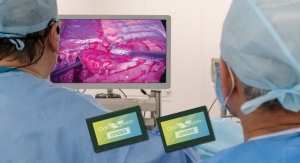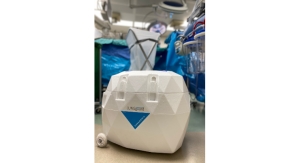Paul Fardy, VP of Data Services, CROS NT08.01.17
Device development is a grueling process with long timelines and excruciating costs. Medical device trials are sometimes considered less intricate than drug development studies; however, medical device studies have complexities that span across regulatory challenges, product types, and unique statistical analyses and study designs. Throughout the trial process, sponsors often face obstacles that delay timelines and inevitably increase costs.
Challenges are present for both device developers and consumers. Consumers are after an affordable product that is available as early as possible, while device makers are anxiously seeking funding in the initial stages and then looking to streamline the trial process to get a product to market quickly and within budget. In the middle are the regulatory authorities that throw up roadblocks when it comes to patient safety and device efficacy.
For example, in recent years, the European Medicines Agency (EMA) has decided to require more sophisticated clinical trials by eliminating the equivalence principle as an acceptable market-ready justification and proposed more postmarket follow up. These reforms mirror the process already in place by the Food & Drug Administration (FDA); however, the FDA has recently reached a decision on data systems and will not regulate devices that merely “display, store, or transfer information.” The decision is the FDA’s attempt to not meddle in software and IT, but rather, promote more innovation in the sector.

Paul Fardy is VP of Data Services for CROS NT.
Many studies can fall off track for reasons that sponsors can control with better planning and due diligence when it comes to choosing the right vendors. When problems arise, sponsors often look to different vendors in an effort to “rescue the study.”
The common challenges sponsors often face in data collection and reporting that lead to costly delays include:
Therefore, how important is a clinical data strategy in this growing sector? Medical device companies need to think about strategy from conception to market—from preparing due-diligence-ready datasets for funders to postmarket safety surveillance for regulatory authorities.
The medical device market is growing as a result of entry by new startups seeking to introduce innovative products. However, these startups often need to secure funding for further development. Preparing datasets in a due diligence manner is an important first step and companies should consider the following suggestions.
1. Invest in data quality from the beginning.
Many sponsors fail to define a clinical data strategy from the outset, which includes plans for the entire phase of development (including postmarket). Clinical data is a sponsor’s greatest asset and, therefore, companies should invest in a clinical data team with the proper experience and know-how for efficient database build and management, as well as query management.
2. Involve a biostatistician from the beginning and keep a consultant statistician on the team throughout the development cycle.
The best time to involve a biostatistician in a trial is from the very beginning so that he or she can understand the study design and make suggestions on hypothesis testing and analysis. The statistician plays a vital role in protocol development and design, data management, monitoring, and reporting. Keeping a consultant statistician on the team throughout the study will help alleviate problems that arise with trial design and data analysis, as well as reporting to regulatory feedback. Statisticians can apply trial design methods—such as adaptive trial design—which can make significant changes in the study that reduce timelines, including early study termination if necessary. Most importantly, statisticians can support in DSMB and regulatory meetings, and help make sense of clinical data.
3. Centralize clinical data with a specialized vendor.
When data is dispersed across vendors, sponsors often face problems with data traceability, cross-product analysis, query management, and data inaccuracies. Centralizing clinical data services—including biostatistics, data management, and medical writing—saves time by creating a global library of databases, shorter learning curves between contract research organization (CRO) and sponsor, and easy access to study metrics. Quality is greatly improved through standardization, familiarity with customer processes, formats, templates, and communication.
4. Implement a strategic Functional Service Model to address staff augmentation and turnover.
The functional service provider (FSP) model facilitates a scalable, expert team of resources for a particular function and results in improved quality, eradication of change orders, reduced training, and greater efficiency. Using an FSP, sponsors can save on recruitment fees, training costs, and HR management time. The CRO is responsible for producing the required resources and ensuring continuity of trained resources. In this case, the sponsor can be guaranteed that they will have the same resources dedicated to a project that understand both the CRO’s and sponsor’s requirements. Smaller companies can consider the “Micro FSP” model, which is a scaled-down version of FSP for companies requiring generally less than 10 resources.
5. Implement technology—from EDC to risk-based monitoring.
Technologies such as electronic data capture (EDC) and/or electronic clinical outcome assessment (eCOA) can help keep costs under control, especially if there are low-cost options. Implementing an EDC solution into your medical device trial can provide immediate feedback, more accessible trial information, and higher data quality. It can facilitate an adaptive approach, or in the case of a trial that is showing a negative trend, it can allow for early termination, thereby reducing the risk to patients and reducing costs. Implementing a cloud-based solution improves the quality of data through automated edit and discrepancy checks, faster data cleaning, audit trails, and compliance with good clinical practice and regulatory guidelines.
Risk-based monitoring (RBM) combines on-site monitoring along with centralized remote monitoring by coordinating centers. Based on risk assessments for how data is captured and how a protocol has been designed, risk-based monitoring activities can be proactively supported by the use of reporting tools. One important component of RBM is the metrics that enable source data verification and triggered alerts when sites have inconsistent data patterns of problems. Centralizing the data with a specialized team of data managers and statisticians allows for accurate and timely metrics about site performance.
Conclusion
Medical devices have their own special complications as it relates to clinical trials. It’s no surprise that good recordkeeping is important to maintain a healthy flow of information and bring the device to market in the speediest manner. The five steps outlined in this article give device makers the best plan of action for data management in trials for both regulators and investors.
Paul Fardy is VP of Data Services for CROS NT. He carries over 27 years of experience in biometrics team management with particular expertise in clinical data management procedures and processes. Most of Fardy’s career was spent in large pharmaceutical companies managing functional teams in data management, statistics, statistical programming and medical writing where he recruited the necessary resources and developed metrics and resource planning for clinical studies. Fardy also has experience in leading operations in the CRO sector prior to joining CROS NT and has earned a reputation for quickly developing productive, cohesive, and motivated teams. He has a degree in Microbiology from the University of Surrey and is based in the United Kingdom. He can be reached at paul.fardy@crosnt.com.
Challenges are present for both device developers and consumers. Consumers are after an affordable product that is available as early as possible, while device makers are anxiously seeking funding in the initial stages and then looking to streamline the trial process to get a product to market quickly and within budget. In the middle are the regulatory authorities that throw up roadblocks when it comes to patient safety and device efficacy.
For example, in recent years, the European Medicines Agency (EMA) has decided to require more sophisticated clinical trials by eliminating the equivalence principle as an acceptable market-ready justification and proposed more postmarket follow up. These reforms mirror the process already in place by the Food & Drug Administration (FDA); however, the FDA has recently reached a decision on data systems and will not regulate devices that merely “display, store, or transfer information.” The decision is the FDA’s attempt to not meddle in software and IT, but rather, promote more innovation in the sector.

Paul Fardy is VP of Data Services for CROS NT.
The common challenges sponsors often face in data collection and reporting that lead to costly delays include:
- Poor trial design and inconsistency with endpoints
- Inconsistencies in trial data and failure to detect erroneous or fraudulent data
- Failure to understand regulatory requirements and regulatory feedback
- Dispersed data that can lead to inaccurate analyses or poor data quality
- Vendor problems with staff and project team turnover
Therefore, how important is a clinical data strategy in this growing sector? Medical device companies need to think about strategy from conception to market—from preparing due-diligence-ready datasets for funders to postmarket safety surveillance for regulatory authorities.
The medical device market is growing as a result of entry by new startups seeking to introduce innovative products. However, these startups often need to secure funding for further development. Preparing datasets in a due diligence manner is an important first step and companies should consider the following suggestions.
1. Invest in data quality from the beginning.
Many sponsors fail to define a clinical data strategy from the outset, which includes plans for the entire phase of development (including postmarket). Clinical data is a sponsor’s greatest asset and, therefore, companies should invest in a clinical data team with the proper experience and know-how for efficient database build and management, as well as query management.
2. Involve a biostatistician from the beginning and keep a consultant statistician on the team throughout the development cycle.
The best time to involve a biostatistician in a trial is from the very beginning so that he or she can understand the study design and make suggestions on hypothesis testing and analysis. The statistician plays a vital role in protocol development and design, data management, monitoring, and reporting. Keeping a consultant statistician on the team throughout the study will help alleviate problems that arise with trial design and data analysis, as well as reporting to regulatory feedback. Statisticians can apply trial design methods—such as adaptive trial design—which can make significant changes in the study that reduce timelines, including early study termination if necessary. Most importantly, statisticians can support in DSMB and regulatory meetings, and help make sense of clinical data.
3. Centralize clinical data with a specialized vendor.
When data is dispersed across vendors, sponsors often face problems with data traceability, cross-product analysis, query management, and data inaccuracies. Centralizing clinical data services—including biostatistics, data management, and medical writing—saves time by creating a global library of databases, shorter learning curves between contract research organization (CRO) and sponsor, and easy access to study metrics. Quality is greatly improved through standardization, familiarity with customer processes, formats, templates, and communication.
4. Implement a strategic Functional Service Model to address staff augmentation and turnover.
The functional service provider (FSP) model facilitates a scalable, expert team of resources for a particular function and results in improved quality, eradication of change orders, reduced training, and greater efficiency. Using an FSP, sponsors can save on recruitment fees, training costs, and HR management time. The CRO is responsible for producing the required resources and ensuring continuity of trained resources. In this case, the sponsor can be guaranteed that they will have the same resources dedicated to a project that understand both the CRO’s and sponsor’s requirements. Smaller companies can consider the “Micro FSP” model, which is a scaled-down version of FSP for companies requiring generally less than 10 resources.
5. Implement technology—from EDC to risk-based monitoring.
Technologies such as electronic data capture (EDC) and/or electronic clinical outcome assessment (eCOA) can help keep costs under control, especially if there are low-cost options. Implementing an EDC solution into your medical device trial can provide immediate feedback, more accessible trial information, and higher data quality. It can facilitate an adaptive approach, or in the case of a trial that is showing a negative trend, it can allow for early termination, thereby reducing the risk to patients and reducing costs. Implementing a cloud-based solution improves the quality of data through automated edit and discrepancy checks, faster data cleaning, audit trails, and compliance with good clinical practice and regulatory guidelines.
Risk-based monitoring (RBM) combines on-site monitoring along with centralized remote monitoring by coordinating centers. Based on risk assessments for how data is captured and how a protocol has been designed, risk-based monitoring activities can be proactively supported by the use of reporting tools. One important component of RBM is the metrics that enable source data verification and triggered alerts when sites have inconsistent data patterns of problems. Centralizing the data with a specialized team of data managers and statisticians allows for accurate and timely metrics about site performance.
Conclusion
Medical devices have their own special complications as it relates to clinical trials. It’s no surprise that good recordkeeping is important to maintain a healthy flow of information and bring the device to market in the speediest manner. The five steps outlined in this article give device makers the best plan of action for data management in trials for both regulators and investors.
Paul Fardy is VP of Data Services for CROS NT. He carries over 27 years of experience in biometrics team management with particular expertise in clinical data management procedures and processes. Most of Fardy’s career was spent in large pharmaceutical companies managing functional teams in data management, statistics, statistical programming and medical writing where he recruited the necessary resources and developed metrics and resource planning for clinical studies. Fardy also has experience in leading operations in the CRO sector prior to joining CROS NT and has earned a reputation for quickly developing productive, cohesive, and motivated teams. He has a degree in Microbiology from the University of Surrey and is based in the United Kingdom. He can be reached at paul.fardy@crosnt.com.




























